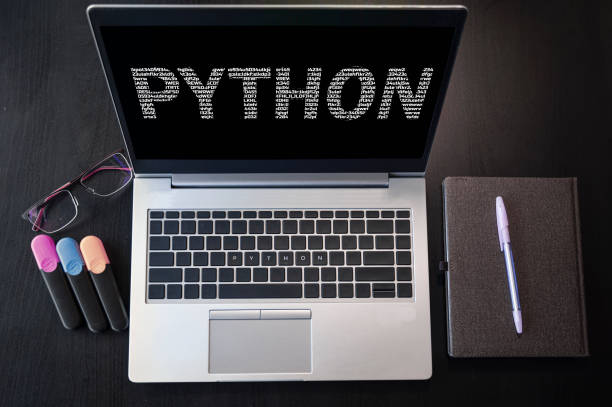The Best Way to Learn Python in 2022 (Free & Paid Python Tutorials)

Python’s popularity is steadily increasing, especially as it is used in emerging technologies such as data science, machine learning, and artificial intelligence. Due to its efficiency, versatility and ease of learning, it has also taken software development by storm.
Currently, Python is the second most popular programming language (after JavaScript) on GitHub. Whether you are a complete beginner or already have some programming experience and want to update yourself for better career prospects, this article is for you.
Are you in a hurry? Save this article in PDF.
Tired of scrolling? Download a PDF version to read offline and share with colleagues.
Download
We’ve put together a list of the best Python tutorials, including both free and paid resources.
What is Python?
Python logo.
Python is a high-level open source programming language designed by Guido van Rossum. Released in 1991, the design philosophy of this programming language aims at code readability, which is why it is one of the easiest languages to learn.
Furthermore, Python is an object-oriented, reflexive, functional, procedural, and structural language. All of these Python approaches allow programmers to write logical and clear code for projects of any scale.
At present, there are three major versions of Python, Python 3 being the most recent. It also supports a wide variety of libraries to make code writing easier.
Kinsta has spoiled me to the point that I now demand this level of service from every vendor. We also try to be on the same level with our support for SaaS tools.
Features
The features of Python are:
- Open source and free: Python is open source and you can download the code for free to use and modify it for your projects.
- Easy to Learn: Python is becoming popular because it is easier to learn than other languages. Its simpler syntax uses plain English with less complexity. It is developer-friendly and it is easy to program in Python.
- Extensive Libraries: The standard Python library is extended with modules and functions that help you get your projects done faster, avoiding writing code from scratch. You can find reusable code for various processes such as image manipulation, unit testing, CGI and more. Examples include Django, Flask, NumPy and SciPy.
- Extensible: Python is highly extensible and has several modules that enhance its core functionality. For example, you can add a programmable interface to an existing application.
- Object-Oriented: Python uses object-oriented programming concepts , such as objects, classes, inheritance, data encapsulation, and more.
- Interpreted and easy to debug: Python executes code linearly, like Java, C and C ++. This way, there is no need for compilation and debugging becomes easy.
- Dynamic Variables: Specify a variable type such as char, int, double, etc. it is not needed in Python as it is decided during code execution rather than at the beginning. This makes programming easier and reduces lines of code.
- Portable: Python uses portable code. You can use the same code on different platforms like Windows, macOS, Unix or Linux.
Where is Python used?
Python is a versatile programming language and lends itself to a variety of purposes, including:
- Web Development: Due to its efficiency, speed, and other positive features, Python is excellent for web development . Thanks to the availability of extensive libraries such as Django and Flask, the process becomes much more manageable. Popular companies using Python include Instagram, Reddit, Uber, and Spotify.
- Software development: With Python you can create software programs and applications running on devices. Many Python packages, such as NumPy, Tkinter, SciPy, etc., simplify software development procedures. It is also possible to develop complex applications that perform scientific and numerical calculations. Among the greats who use it for software development are Dropbox, PyChess, BitTorrent, Gramps, etc.
- Machine learning and artificial intelligence: From search engines to social media, chatbots and virtual assistants, algorithms are everywhere and are based on machine learning and artificial intelligence. Python’s exclusive libraries, such as SciPy, Seaborn, TensorFlow, NumPy, Pandas, etc, do just that.
- Data Science: Python is used extensively in data science. It has many related libraries and frameworks such as PyBrain, Bottle, Flask, web3py, etc. which are useful in data science to visualize and analyze large volumes of data and for other purposes. It also helps in web scraping which has become important these days for businesses.
- Create desktop GUI: Thanks to the modular structure of Python, it works on different operating systems and allows you to build desktop GUIs using an efficient framework, module or text processor, such as PyGUI, PyGtk, PyQt4, PyQt5, etc.
- Game Development: It is also possible to develop games using Python libraries such as PySoy (a Python-based 3D game engine). Games developed with Python include Disney’s Toontown Online, Battlefield 2, Frets on Fire, etc.